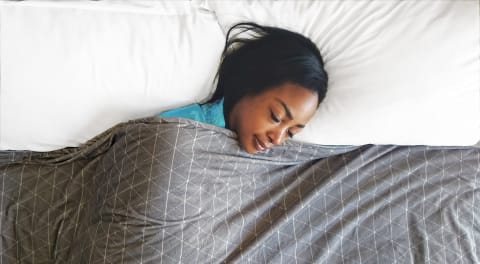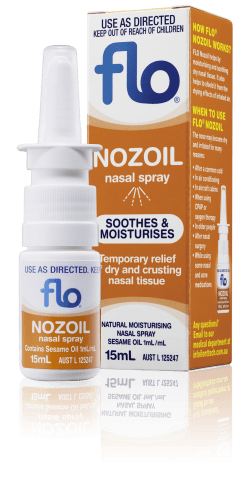CPAP Mask Liners
Improving Comfort and Reducing Skin Irritation
CPAP mask liners are soft fabric inserts placed between your face and the mask cushion. They create a gentle barrier that improves comfort by preventing the silicone from rubbing directly against your skin. For many users, the sensation of plastic or silicone on the face—especially for several hours each night—can lead to discomfort, pressure marks, or even mild skin abrasions. Liners help reduce that by acting as a cushion, easing the contact points between your skin and the mask.
By absorbing facial moisture and oils, liners keep your skin dry and cool, which not only improves hygiene but also helps prevent slipping and movement that can lead to leaks. Some users report less acne or redness after incorporating liners into their routine, particularly if they have sensitive or oily skin. Others find that liners make the experience of wearing a mask less intrusive, helping them psychologically adjust to therapy in the early weeks.
Over time, the accumulated benefits of reduced irritation and better comfort can lead to significantly improved therapy adherence. Users who find the mask more tolerable are more likely to wear it consistently through the night, resulting in better sleep quality and greater health outcomes. Simply put, liners are a small, affordable accessory that can make a big difference in your CPAP experience.
CPAP mask liners may reduce air leaks and improve seal
A good CPAP mask seal is essential for effective CPAP therapy. Even small leaks can reduce therapy effectiveness, cause dryness or eye irritation, and disturb sleep. Liners can help by conforming to your face and filling in minor gaps, enhancing the mask’s seal. Many users report fewer leaks and improved comfort when using a liner, especially if they move around during sleep. While they can’t fix major fit issues, liners are a simple and often effective solution for minor leaks.
Leaking air can disrupt the pressure delivery of your machine and even trigger increased airflow, which can make sleeping more difficult. For light sleepers or those who share a bed, the hissing sound from a leaking mask can be especially frustrating. Liners can help reduce these issues by improving the seal without requiring tighter headgear straps. In some cases, users find they can loosen their mask slightly, relieving pressure on their face, while still maintaining a solid seal thanks to the liner.
If you wake up with air blowing near your eyes, cheeks, or chin, or if your machine data shows high leak rates, a liner may be a helpful addition. Over time, the benefits can be quite meaningful—not just in improved comfort, but in therapy effectiveness.
Different types of CPAP mask liners suit different users
There are various liner types to match different masks: full-face liners for masks covering the mouth and nose, nasal liners for nose-only masks, and liners for nasal pillow masks. Choosing the correct liner type is important for proper fit and function. A liner designed for one mask style won’t work well on another, so identifying your mask type is the first step in selecting a liner.
Liners also vary by material and reusability. Disposable liners are single-use and ideal for those wanting convenience and hygiene. Reusable liners, made from more durable fabrics, can be washed and reused multiple times. They are more economical over time and may offer a thicker, cushioned feel.
Some liners use soft, breathable cotton; others include moisture-wicking fabrics or elastic edges for a snug fit. Many are latex-free and designed for sensitive skin. Reusable liners may come with small tabs or velcro to help keep them in place overnight. With many styles and sizes available, users can find a liner suited to their comfort, hygiene, and budget preferences.
If you tend to sweat at night or live in a humid environment, a liner that excels at moisture control may offer the most benefit. On the other hand, users in dry climates may prioritise softness and skin protection. For users concerned about sustainability, washable liners are a greener choice. There is no one-size-fits-all; your preferences, skin sensitivity, and lifestyle will guide your choice.
ALWAYS FOLLOW THE DIRECTIONS FOR USE. CPAP is used for Obstructive Sleep Apnoea treatment. When considering whether CPAP is right for you, speak to your doctor.
CPAP Mask Liners FAQ
How do you use CPAP mask liners correctly?
Place the liner between your face and the mask cushion before wearing the mask. Align any holes in the liner with your nose or mouth. Once fitted, put on the mask and adjust the straps. Smooth out any wrinkles in the liner that could cause leaks. Ensure the liner isn’t blocking airflow and sits comfortably. Some liners have tabs or velcro to keep them in place. After a few nights, using liners will feel routine.
If you notice air leaks after applying the liner, lift the mask slightly and re-seat it to smooth the liner. Small wrinkles or misalignments can interfere with the seal, so take a moment to check the fit. Using a mirror can help with precise placement until you become familiar with the process. If your liner slips during the night, consider a style with adhesive backing or integrated fasteners.
How long do CPAP mask liners last?
Disposable liners are designed for one-night use. They should be replaced daily for hygiene and effectiveness. Reusable liners last longer—some for up to a month—depending on the material and care. Wash reusable liners regularly by hand or as directed to extend their life. Replace them when they lose shape or start to fray.
Reusable liners should be cleaned after every use to maintain hygiene and effectiveness. Hand washing with a mild detergent and air drying is usually sufficient. Avoid using harsh chemicals or bleach, which can damage the fabric. If you use a reusable liner nightly, having a set of two or more allows for easy rotation and ensures you always have a clean one ready to go.
How do I get a good seal on my CPAP mask?
Use the right mask size and type for your face. Fit the mask while lying in your sleep position. Start with loose straps and tighten gradually. Avoid over-tightening, which can cause leaks. Clean your mask and face daily to remove oils. Liners can help improve the seal by filling small gaps. Check for leaks after fitting and adjust as needed.
Also, ensure your mask components are in good condition. Worn-out cushions, stretched straps, or warped frames can prevent a secure seal even with a liner. Replace mask parts on the manufacturer’s recommended schedule, and consult your CPAP provider if sealing problems persist. Using a liner can extend the lifespan of your mask cushion by reducing direct wear and exposure to skin oils.
Should I wash my CPAP mask every day?
Yes. Clean the mask cushion daily with mild soap and warm water. This removes oils and prevents irritation, bacteria buildup, and leaks. CPAP mask wipes are a quick alternative for daily cleaning. A clean mask performs better and lasts longer. Also clean reusable liners regularly and discard disposables after each use.
Weekly, perform a deeper clean of all mask parts including headgear, frame, and elbow. Regular cleaning not only maintains hygiene but ensures your equipment works optimally. Avoid using scented or oily soaps, which may leave residues that affect sealing. Let the mask parts air dry completely before use to prevent bacterial growth.
What are CPAP padded mask liners and how do they help?
Padded mask liners are soft cloth barriers that protect your skin from the mask cushion. They reduce pressure, prevent skin irritation, and absorb moisture. This cushioning helps minimise red marks and sore spots. Liners also stabilise the mask and reduce leaks, especially during movement. If your mask feels too firm or causes pressure marks, a padded liner may help.
Some users experience sensitivity to silicone or pressure from the mask cushion. Padded liners act as a buffer, distributing force more evenly and reducing discomfort. They also improve therapy adherence by making the mask more tolerable, especially for those new to CPAP. Using a liner can help prevent long-term issues like skin breakdown or sore spots.
What are CPAP mask liners for CPAP machines and why are they used?
CPAP mask liners are accessories used with CPAP masks to improve comfort and function. They provide a barrier between your skin and the mask, reduce irritation, improve the seal, and enhance overall comfort. Liners help absorb oils and moisture, keeping your face dry and the mask in place. They’re used to prevent skin problems, reduce noise and leaks, and make therapy more tolerable. For many users, liners are a simple way to improve their sleep therapy experience.
They are particularly helpful for users experiencing issues with mask fit, skin sensitivity, or those needing extra help with leak control. Liners are an effective, low-cost way to personalise your mask setup. At Sove CPAP Clinic, we often recommend liners as a first step when comfort or seal becomes an issue, offering an easy solution before switching to a new mask.








